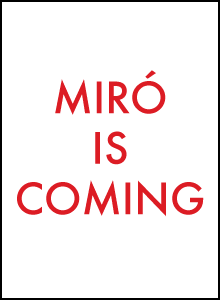
Miró is the lead component of an analytical software suite (The Artists Suite) developed by Stochastic Solutions. It is in production use as a beta product with a small number of customers at present.
Advanced Analytics
Miró is an analytics package, covering data manipulation, behaviour measurement, ad hoc reporting and query functionality as well as carefully chosen advanced predictive modelling approaches, including uplift modelling.
Production-Oriented Analytics
Miró implements production-oriented analytics, meaning that it is focuses on high analyst productivity for the skilled analyst, from data import to production-ready or near-production-ready output. It features a Unix-style command-line interface, a (lisp-like) vector expression language and a two levels of API. It does not offer a graphical user interface per se but can be used through a web browser, allowing graphical and rich text output to be used.
Miró generates high-quality, sometimes graphical output (using its sister program, Klee.) Such output draws its inspirations more from Edward Tufte than—say—Excel, focusing on minimizing chart junk and maximizing meaningful information content. It also has the ability to produce animated output and hyperlinked otuput.
Cross-Platform
Miró is cross-platform (at least across Unix, Linux, Mac and—with some limitations—Windows) with a focus on standards compliance.
Interfaces
Miró provides multiple interfaces, including a programmatic interface (an API), a command-line/scripting interface and some web interfaces. The API layer makes it a powerful base for some kinds of embedded analytical applications. Miró also includes a very powerful (lisp-like) expression language for data manipulation.
Audit-Trail and Scripting-by-Doing
Miró automatically generates detailed logs providing a
fairly comprehensive audit trail and the ability to rerun
analysis sessions, either verbatim or with specified
modifications.
It logs both command sequences and output (in multiple forms)
meaning that work is never accidentally lost, results can always
be traced in
Additionally, Miró datasets contain an audit trail showing the sequence of operations that resulted in any final dataset, allowing diagnoses of problems, confidence and data provenance and allowing the full history of datasets that may have been worked on in multiple sessions, perhaps on multiple machines, to be reliably traced.
Multiple Back Ends
All Miró functionality is available using its native back-end, in which data is stored in its own column-oriented data store and all manipulations are performed directly by Miró code. This is suitable for interactive use and batch use
A significant subset of Miró's functionality is also available using a database back end. In this mode, Miró connects to a database (currently Postgres or Greenplum) and collects metadata, but does not extract the main data from tables. Rather, Miró issues SQL (and in some cases calls in-database functions it defines) to perform equivalent operations. Depending on the relative power and capacity of the machine running Miró and the database hardware, as well as data volume and the nature of the operations being performed, this can sometimes be faster and sometimes slower than extracting the data into Miró, performing whatever analysis ais required, and writing any results back.
This approach also allows analytical workflows to be developed in one mode (most commonly using the native back end) and then deployed, with minimal or no changes, using a database. This is a popular development-production split for some clients.
>>>>>>> fa3ddf116ee7eb4c9a2147695f15eb4a510cf3ba






